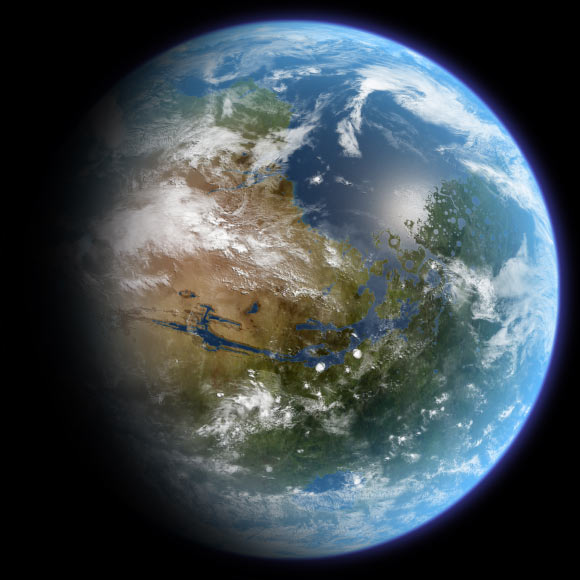Astronomers are very interested in the Habitable Zone of distant stars, which is the orbital radius where liquid water, and therefore potentially life, can exist on a planet in that region. But life itself changes the characteristics of a planet. New research suggestions that life is even capable of redefining what the Habitable Zone can mean.
One of the defining characteristics of life on a planet is its ability to change the equilibrium state of a world. For example, Earth was born with a lot of oxygen in its atmosphere, but that oxygen is unstable. We should have lost it a long time ago, and in fact we did. But photosynthesis from plants and algae replenishes oxygen in our atmosphere, giving us a new oxygen-rich state that we otherwise wouldn’t have had.
This concepts extends to other properties of a planetary atmosphere, like its temperature and its pressure. Essentially, life on a planet works to keep everything in balance and as hospitable as possible. A pair of astronomers have recently used in this concept to extend the concept of the Habitable Zone to what they call the Gaian habitable zone – a habitable zone that is modified by life itself.
The Habitable Zone is the radius around a star where liquid water can potentially exist on the surface of a planet. It’s not too close to the star to boil away all the water, and not too far away to freeze it. Astronomers are hunting for planets in the Habitable Zones of other stars, because that is the best chance to find life that looks like ours around a distance star.
But the new paper argues that if life even gains a small foothold on a planet, it will immediately start changing the nature of that planet’s atmosphere to make it more favorable. So, for example, you might have a planet that sits just outside the traditional habitable zone of a star, but finds a way to get life started anyway. That life will do its best to make the world a better place for itself, like raising the temperature of the atmosphere or adding beneficial gases to the atmosphere.
Once life really gets going, it can extend the boundary of the Habitable Zone beyond what we traditionally think, turning a marginally habitable world into perfectly fine one.
The new research highlights just how flimsy the concept of the Habitable Zone can be. We have to be open to the chances of finding life beyond a narrow, limited range of distances around other stars. The new research also suggests that worlds previously thought uninhabitable might be anything but. We’ll just have to keep looking to find out.

